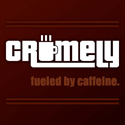 I picked up Lee Gutkind’s “The Art of Creative Non-Fiction” because I though it might help me write better here. I don’t think it will. It’s less focused on the personal essay, and more focused on the long-form quasi-journalistic essay.
I picked up Lee Gutkind’s “The Art of Creative Non-Fiction” because I though it might help me write better here. I don’t think it will. It’s less focused on the personal essay, and more focused on the long-form quasi-journalistic essay.The author is a college professor, and I wonder if he wrote this book to use it as the text for his classes. It may be more effective that way. As a stand alone text it’s lacking.
The book is 200 pages long. The first 67 pages is a basic introduction to creative non-fiction. The next 62 pages are about the process. The final 81 pages are the appendices, and are mainly samples.
To be fair, my view seems to be in the minortiy. The reviews on Amazon have been much more positive and it currently has a rating of 4.5 stars.
Section 1: The Creative Part
Traditional journalists learn early in their education that creativity or imagination in newspapers and magazines are basically disallowed. Reporters with any real literary talent will have it squeezed out of them by stubborn and insensitive editors. Disillusioned they will write secretly at night (becoming closet poets or novelists), or they leave the profession to chase their muse or some other dream.
Page 10
This is the most interesting phrase in the section. There is little value in most of the first third of the book. If you pick up the book, save yourself a couple hours and skip these pages.
The author includes an inordinate amount of his own samples. To make a point about creative non-fiction, he simply copies and pastes content he already published in other articles and books.
There are thousands of sources he could have drawn from for his examples, but he keeps going back to his own work. I’m not sure if it’s arrogance that keeps him using his own material, or if it’s a way to double-up on the royalties. It hurts his credibility.
Even if he sourced other content for the chapter, it would still be too much. There are too many samples, and they are too long. Rather than telling us more about creative non-fiction, or telling us how to do it, he just shows what he and other people have done.
And while there’s definitely value in that, if I wanted to just read examples of creative non-fiction, I’d actually pick up one of the 40 issues of the Atlantic Monthly that have been sitting on my floor for years waiting for a reader.
When not focusing on samples, he does include some practical advice for the writer. He covers ways to improve your writing.
Just as musicians practice their instruments every day, actors rehearse, basketball players shoot hoops, boxers do road work and spar – writers write.
Page 58
Of course, that’s a point that should also have been hammered home earlier on, along with:
Focus also dictates what not to write about.Section 2: The Non-Fiction Part
Page 64
In the second section of the book (page 67 thru 129), he tells us some important things. If you start reading at about page 67, you’ll be in good shape. Gutkind gets to the essence of the genre here. Rather than talking vaguely about scenes and just throwing in samples of the genre, he should have just made this point earlier – and then explored it.
The creative aspect of the creative nonfiction experience should be utilized to make the teaching element – the nonfiction part of the product – more provocative.
Page 69
Gutkind also points out that writers need to subvert their egos to the needs of their editors, publishers, and audiences.
The second reason Creative Nonfiction and most other journals and magazines reject essays is their authors’ lack of attention to the mission of the genre, which is to gather and present information, to teach readers about a person, place, idea, or situation.
Page 70
If your work is regularly rejected with form letters, you may not necessarily judge yourself to be a poor writer, but it is fair to say that you may not yet be good enough to deserve the attention of a harried editor, pressed for time. It is a signal for you to heed.
Page 82
The strongest section of the book is Chapter 8 – Think Globally, Act Locally. It’s about choosing a topic. He covers both strategic ways to find new material, and tactical day-to-day ways authors can keep their creative pumps primed.
Suddenly I was struck by both the clarity and the irony of the situation: I had travelled halfway around the world to find a story that involved intense human drama and contained universal ideas and issues, when one of the most incredible stories in the history of medicine was evolving in my own back yard.
Page 77
Gutkind also offers the same lesson every English teacher I ever had offered – Good Writers are Good Readers.
Remember that the foundation of the writing life is reading: We read the best writers to understand how far we must reach toward excellence and how hard we must try. We read what is being written in our field today to keep up with our competition and to keep current on the subjects that appeal to us.
Page 92
To get the most out of this book, read:
- Chapter 8
- Rest of Section 2
- Appendix 3
- Appendix 1
- Appendix 4
- Section 1
Or just stop after Section 2.

No comments:
Post a Comment